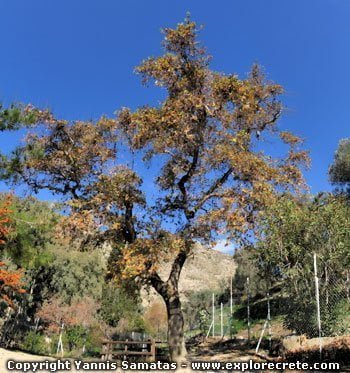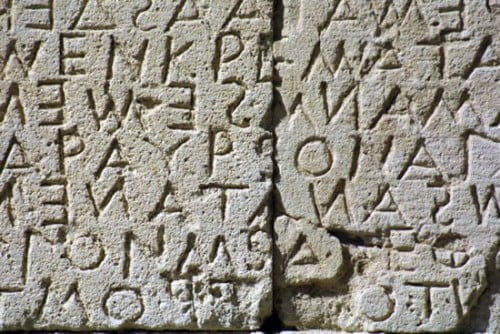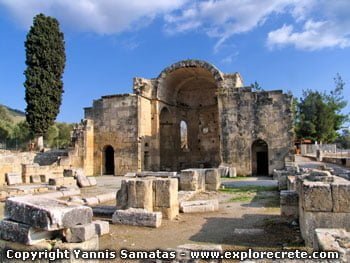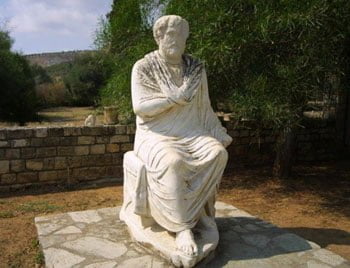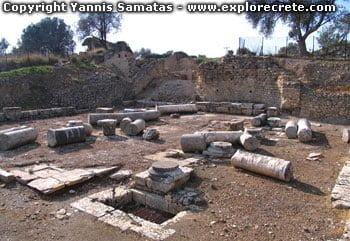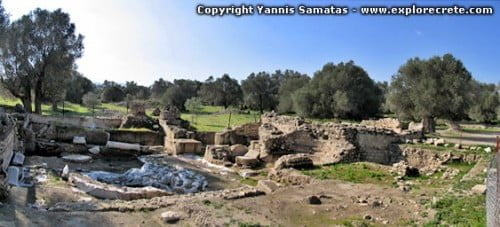Phaistos, the Minoan Palace
Phaistos, or more correctly the Minoan Palace of Phaistos, is located in the Messara Plain in south-central Crete, 55 kilometres south of Heraklion and a short distance from the archaeological site of Agia Triada, the archaeological site of Gortys and Matala.
Phaistos is “Φαιστός” in Greek and you may find it also written as Phaestos, Faistos or Festos. It is one of the most important archaeological sites in Crete, with many thousands of visitors annually.
The Minoan palace of Phaistos corresponds to a flourishing city which arose in the fertile plain of the Messara in prehistoric times, from circa 6000 BC to the 1st century BC, as archaeological finds confirm.
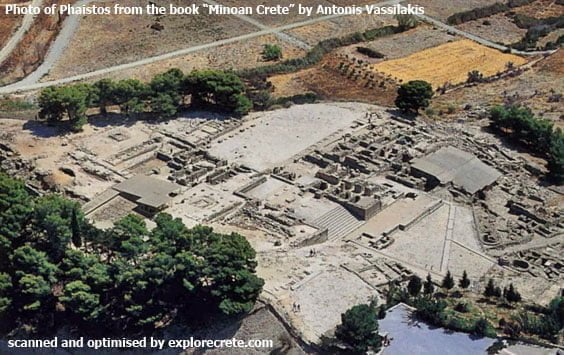
History of Phaistos
The history of the Minoan palace of Phaistos, like that of the other Minoan palaces of Crete, is a turbulent one. The first palace of Phaistos was built in circa 2000 BC. Its mythical founder was Minos himself and its first king was his brother Radamanthys.
In 1700 BC a strong earthquake destroyed the palace, which was rebuilt almost immediately. However, Phaistos was no longer the administrative centre of the area, an honour which passed to neighbouring Agia Triada. Phaistos continued to be the religious and cult centre of south Crete.
In 1450 BC there was another great catastrophe, not only in Phaistos but across the whole of Crete. The city of Phaistos recovered from the destruction, minted its own coins and continued to flourish for the next few centuries until the first century BC, when it was destroyed by neighbouring Gortys.
Excavations at Phaistos
The first excavations in the wider area of Phaistos were undertaken in 1900 by the Italian Archaeological School under Federico Halbherr and Luigi Pernier, continuing after the Second World War under Doro Levi. Most of the buildings visible today belong to the Neopalatial period (1700 – 1450 BC). Unlike Knossos, there have been no efforts at restoration but only conservation.
Tour of Phaistos – Opening Times
From April 1st to October 31st the archaeological site of Phaistos will be open seven days a week from 08:00 until 20:00.
Follow the paved path next to the car park to the open area in front of the ticket booth. You can buy either a ticket just for Phaistos itself or one including a visit to the archaeological site of Agia Triada, a few kilometres to the west.
After the ticket booth is the archaeological bookshop and the refreshment canteen. Visitors with limited mobility are warned that touring the archaeological site will be difficult, as there are many steps at various points.
Also, if you suffer in the summer heat, try to visit Phaistos in the early morning or late afternoon.
- 1 Northwest Court
- 2 Roman Hypostyle Building
- 3 Tripartite Shrine, West Court
- 4 West Court (Theatral Area)
- 5 Propylon to Central Court
- 6 West Magazines
- * Central Court
- 7 Temple of Rhea
- 8 East Court
- 9 Queen’s Apartment + King’s Megaron
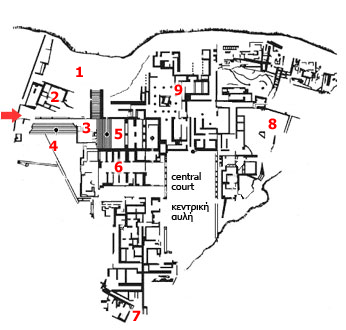
Our tour of the palace of Phaistos begins in the paved Northwest Court. Go down the stairs immediately in front of you to the West Court containing the theatral area and the Tripartite Shrine.
Climb the Great Staircase, passing the Propylaea (Propylon), and enter the Central Court. To your right are the West Magazines of Phaistos.
On your left, in the north part of the Central Court, is the triple-stepped altar and the entrance to the corridor leading to the North Wing, i.e. the Royal Apartments.
South of the Central Court is the Neolithic Kiln and the Temple of Rhea.
On returning to the Central Court, in the East Wing on your right is a megaron known as the Prince’s Megaron. A little further to the northeast is the East Court with the kiln for smelting metals in the middle.
To the north are the ruins of the so-called Archive, where the famous Phaistos Disc was found. From the Northeast Court on your left hand you can see the remains of the workshops.
Continuing north, you come to the Queen’s Apartment. Next door is the King’s Megaron and a lustral basin.
Climb the staircase in front of you – you have now come in a circle back to where you started from.
© explorecrete.com All Rights Reserved. Reproduction or copying without permission is prohibited.

